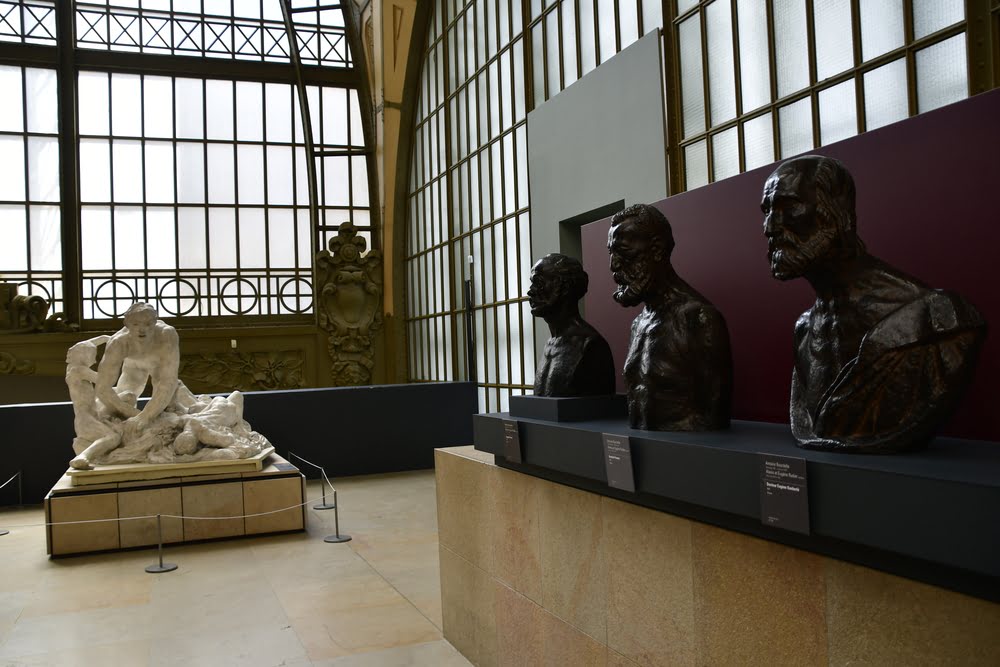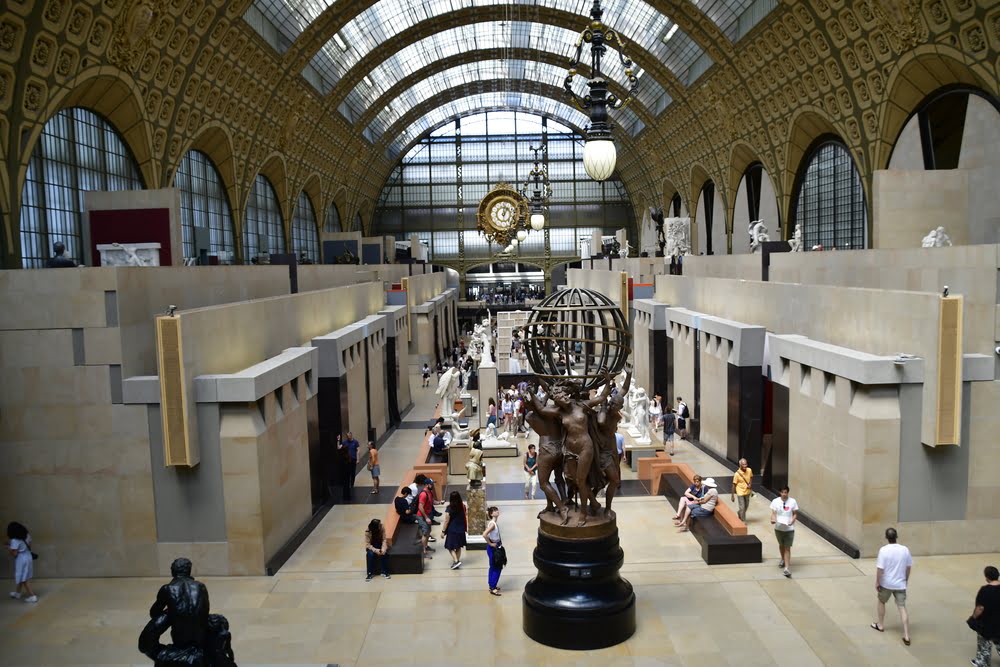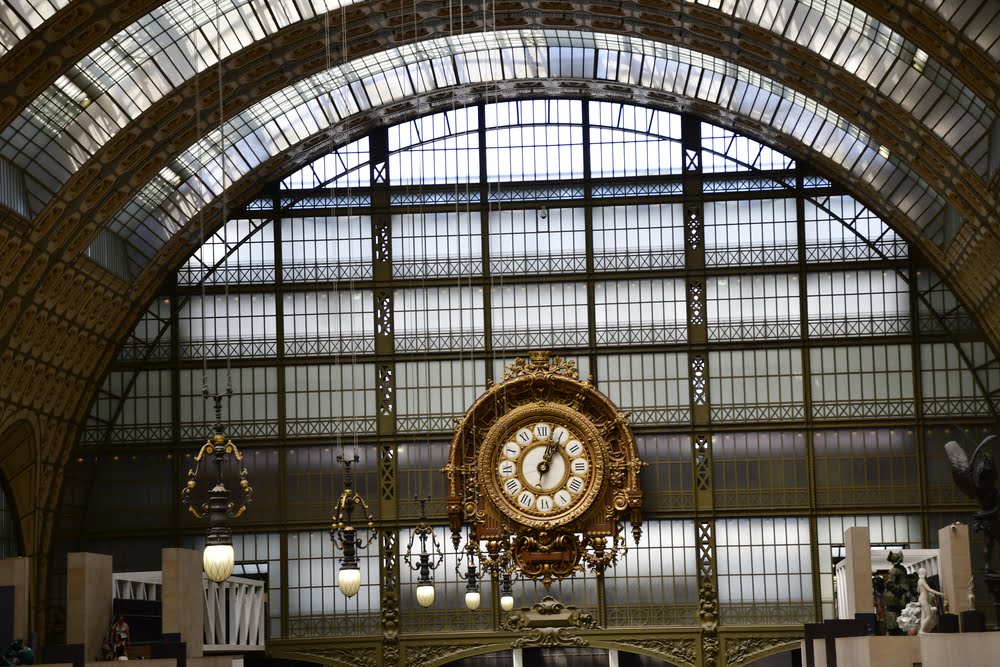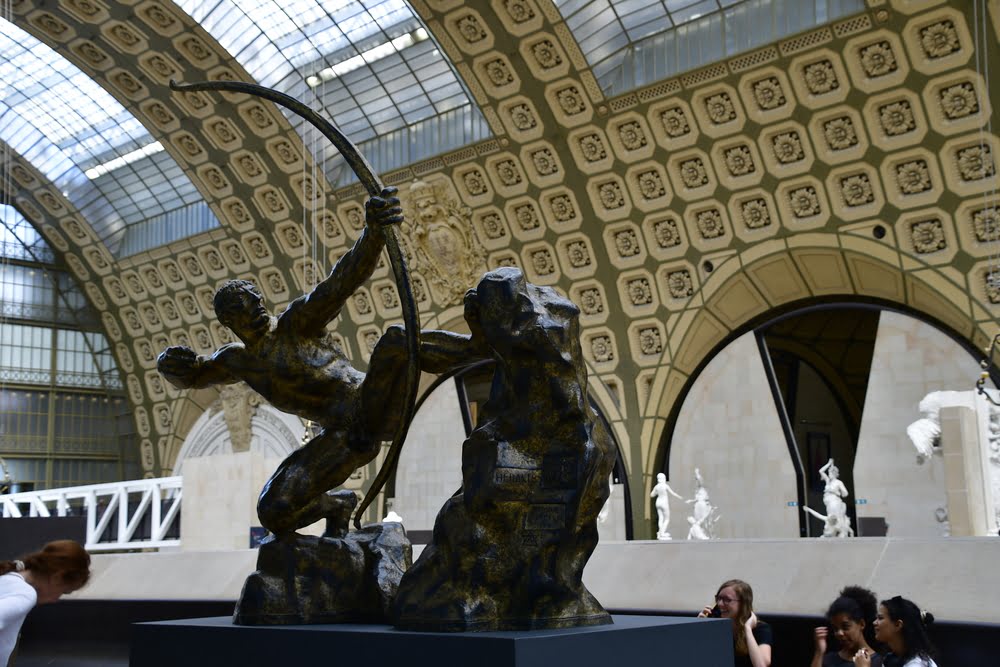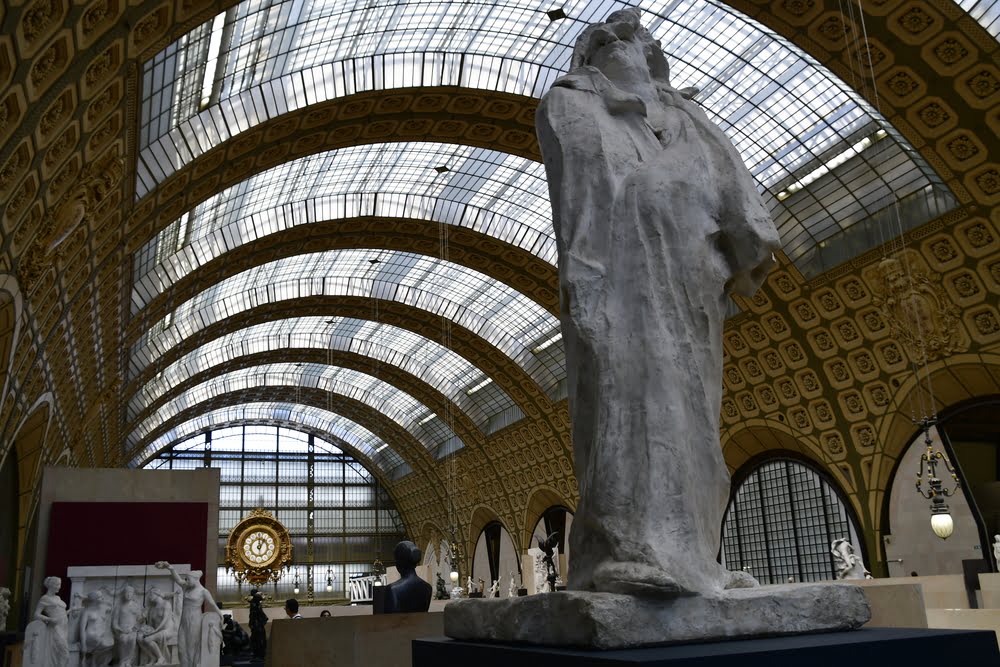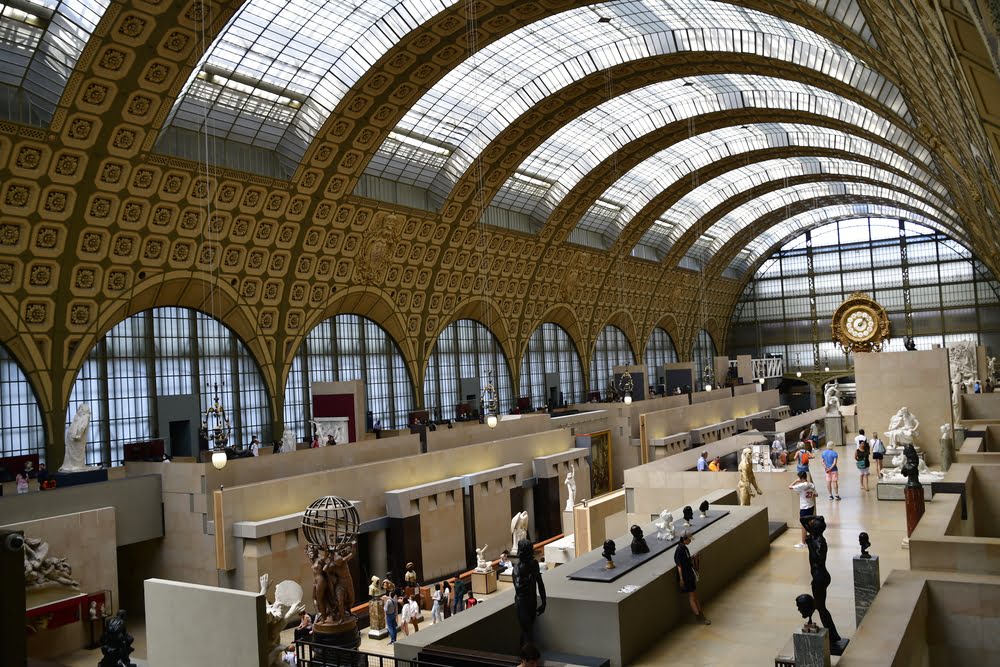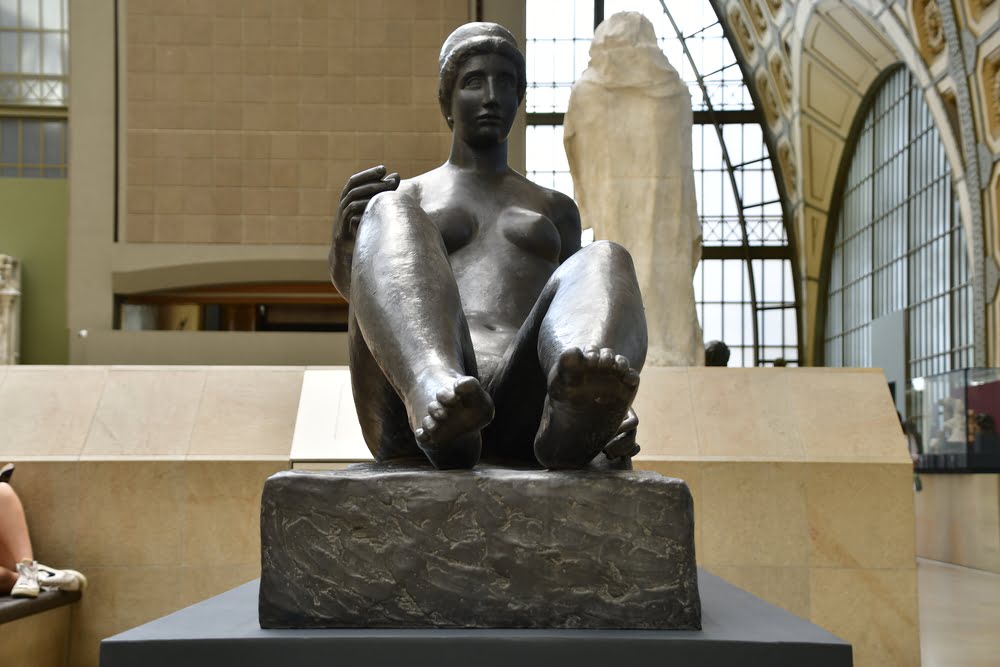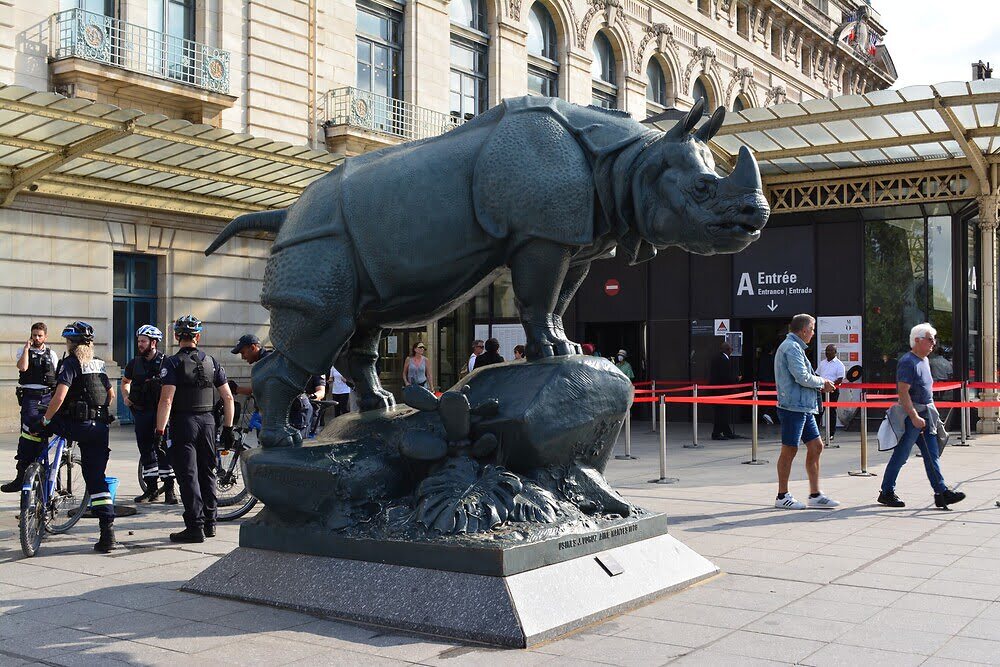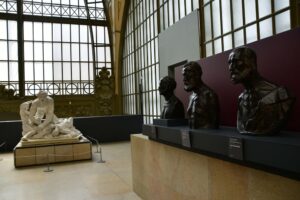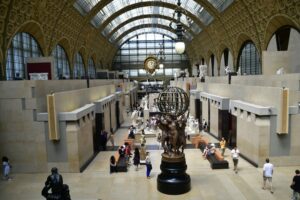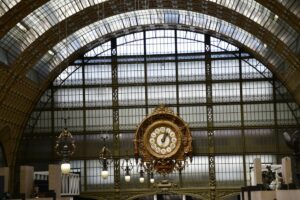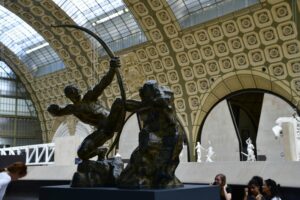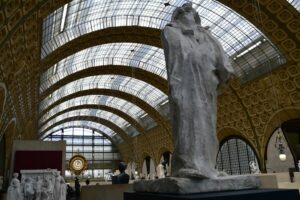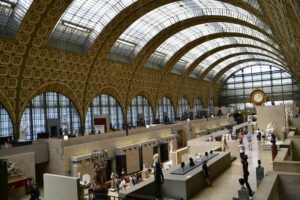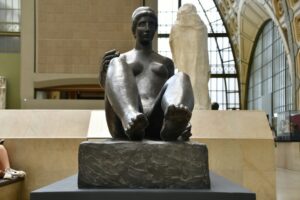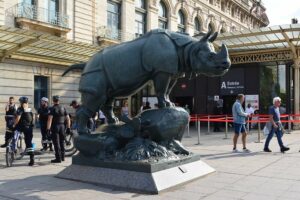- Monuments
- Museums
- Paris Hotels
- Hotels by Category
- Hotels by Districts
- Champs Elysees Hotel
- Montmartre Hotel
- Saint Germain des Prés Hotel
- Montparnasse Hotel
- Porte de Versailles Hotel
- Republique – North Train Station Hotel
- Place de la Nation Hotel
- Latin Quarter Hotel
- Opera Garnier Hotel
- Marais – Bastille Hotel
- Gare de Lyon Hotel
- Gare Saint-Lazare Hotel
- Hotel Place d’Italie
- Other Hotels
- Hotels by Category
- Shopping
- Districts
- Airports
- Paris map
- News
- Directory
- Contact us
Orsay Museum
- Profile
- prev
- next
- prev
- next
-
History
Built in the year 1900 by Victor Laloux, this train station was meant to service the Orleans line. Unfortunately, the line ceased because the platforms were not long enough. After being used for a variety of purposes, the whole building was entirely refitted inside and transformed into an art museum covering the period from 1850 to 1914, with an area of 50 000 m2.
The conversion of this abandoned train station, the Gare d’Orsay, into the Musee d’Orsay marked a major advance in the reorganization of the different collections. The museum is devoted to all art forms from the second half of the 19th century (painting, sculpture, architecture, music and items trom everyday life). Significant Impressionist and neo-lmpressionist works are on display, as well as the creations of the more conservative academic school that was also known as Pompier in France. Art-Nouveau objects and blue-prints complement the collections.
Design
The giant, 32-m-high (102-ft) and 140 m-long (450-ft) main hall of the station, artfully surrounded by a delicate iron construction enabling the abundant use of glass, was deserted by all, except for the rats. By the 1960s, the dilapidation had progressed to the point that Orson Welles chose it as a backdrop for his filming of Kafka’s The Trial. And in 1971 it was finally decided to tear the building down.
Fortunately, this did not occur and during Georges Pompidou’s term of office as president, the idea of transforming the train station into a museum first emerged. His successor, Giscard d’Estaing, eventually gave the go-ahead for the time-consuming and expensive renovations. The work began in 1980. Some 270 million US dollars flowed out of the taxpayers’ pockets before President Miterrand could proceed to ceremoniously dedicate it.
The Collections
The collection is made up mostly from the late works of the Louvre and the Impressionist paintings from the nearby museum Jeu de Paume. You can also find works from the mid-nineteenth century to the early twentieth, chronologically bridging the Louvre and the Pompidou Center.
Displayed on the ground floor, are earlier works devoted to sculpture with Dance. The hall has two rows of smaller rooms which are filled with works by Daumier, Millet, Rousseau, Corot and peasant paintings.
In the last room, you can find such works by Courbet. And if you like Monet, there is a room dedicated to him. Other artists are present such as Bazille, Delacroix, Puvis de Chavanne, Degas and Gustave Moreau.
And if you are a fan of Oriental Art, you will enjoy the ingeniously designed gallery.
On the second floor you can see such popular art of the nineteenth century and rooms with furniture and decoration by well-respected “fin-de-siecle painters” (Monet, Pissaro, Renoir, Degas, Sisley and Van Gogh, Cezanne, Gauguin and Toulouse-Lautrec). The building is extremely large and much works have been taken out of reserve stock to fill out the displays. It is advised to start on the ground level with the Impressionist painters and then take the escalators to the upper floor to see the Impressionists and their successors.
Location : 1 Rue de la Légion d’Honneur 75007 Paris (next to the Palace of the Legion of Honour, on the quai Anatole France and across the rue de Bellechasse, is the old Orsay station)
How to get there :
- Metro line 12: Solférino, Assemblée Nationale
- Bus : 24, 63, 68, 69, 73, 83, 84, 94.
- RER C : Musée d’Orsay
Opening :
- Tuesday to Sunday open 10am – 6pm
- Tursday open until 9.45pm
- Sunday : 9am-6pm.
- Closed on Mondays, January 1st , May 1st, December 25th
Official website : https://www.musee-orsay.fr
Nearby hotels
-
14 Rue Stanislas, 75006 Paris, France
-
32 Rue des Saints-Pères, 75007 Paris, France
-
14 Rue de Saint-Simon, 75007 Paris, France
-
1 Rue de la Légion d'Honneur, 75007 Paris, France

